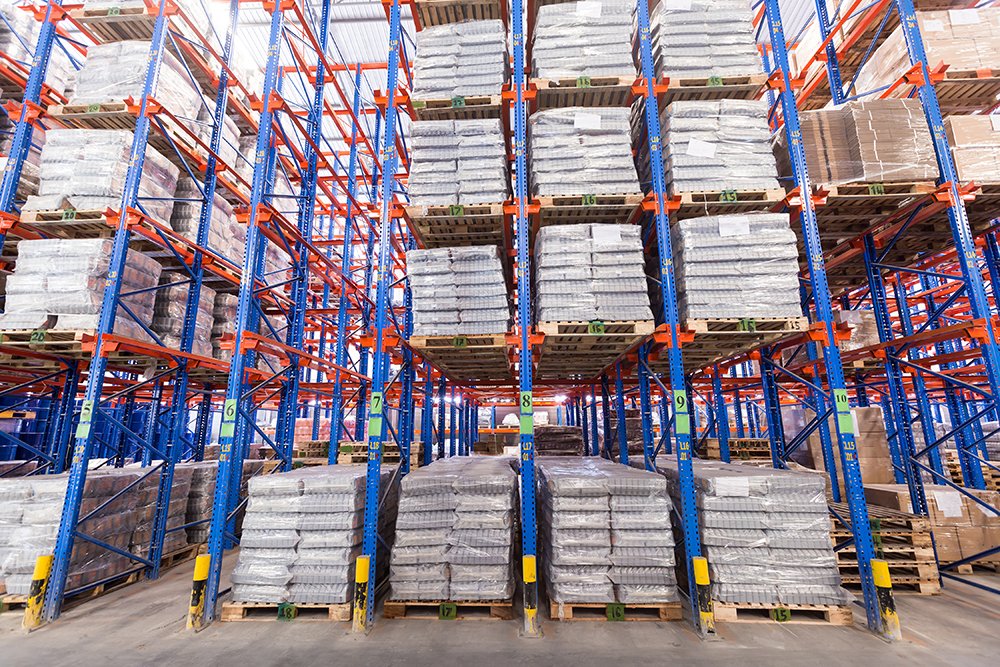Understanding How Industrial Pallet Racks Work
Industrial Pallet Racks Overview
Industrial pallet racks are the backbone of warehouse efficiency and supply chain management – designed to store palletized goods vertically and safely, these systems maximize floor space, streamline inventory management, and improve accessibility.
Whether you’re managing a distribution center, a manufacturing facility, or a large retail operation, understanding how pallet racking systems work is crucial for optimizing your operations.
What Are Industrial Pallet Racks?
Industrial pallet racks are storage systems that use a framework of steel uprights and horizontal beams to create shelves for storing pallets. These racks allow forklifts or automated retrieval systems to place and retrieve palletized goods easily. Their modular design makes them highly customizable to different weight capacities, dimensions, and inventory needs.
Common Types of Industrial Pallet Racks
Different types of pallet racks suit different storage needs. Some of the most widely used include:
Selective Racking
The most common racking system, selective racks offer direct access to each pallet. They’re ideal for warehouses with a high turnover rate and a wide variety of SKUs.
Drive-In and Drive-Through Racks
These high-density systems allow forklifts to drive directly into the racking structure. Drive-in racks use a last-in, first-out (LIFO) method, while drive-through racks allow for first-in, first-out (FIFO) inventory rotation.
Push-Back Racks
Push-back racking systems store pallets on nested carts that move along inclined rails. They’re great for storing multiple pallets of the same SKU while maintaining accessibility.
Pallet Flow Racks
These dynamic systems use gravity rollers to move pallets from the loading to the picking side. Ideal for FIFO inventory management, they’re popular in food and beverage industries.
Cantilever Racks
Used primarily for long, bulky items like lumber or pipes, cantilever racks have arms that extend from columns and allow for open-front access.
How to Choose the Right Industrial Pallet Racking System
Selecting the right system depends on your inventory type, volume, and turnover rate. Consider:
Weight capacity and durability
Floor space and ceiling height
FIFO vs. LIFO needs
Accessibility and equipment compatibility
Olympic Forest Products partners with businesses to assess their pallet storage needs and help them choose a system that supports growth, minimizes damage, and improves throughput.
Safety Considerations for Pallet Racking Systems
Safety is paramount in any warehouse setting. Key safety tips include:
Regular rack inspections for damage and wear
Proper load distribution
Installing rack protection like column guards and end-of-aisle barriers
Training staff on proper use and weight limits
The Role of Industrial Pallet Racks in Sustainable Warehouse Operations
Efficient racking systems contribute to sustainability by reducing wasted space, lowering energy use for heating and cooling, and supporting better inventory control. By optimizing how goods are stored and retrieved, companies can reduce transportation inefficiencies and material waste.
Partner with Experts in Pallet Logistics and Storage
Industrial pallet racks are much more than shelves—they’re strategic tools that impact the performance, safety, and sustainability of your entire warehouse operation. At Olympic Forest Products, we bring decades of experience in logistics and pallet management to help businesses implement the best racking systems for their needs.
Ready to elevate your pallet storage strategy?
Work with Olympic Forest Products for all your pallet needs—from supply and repair to recovery, recycling, and expert storage solutions. Contact us today to get started with a tailored solution that supports your operations and sustainability goals.




